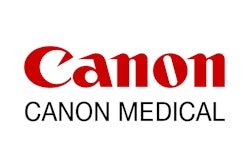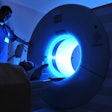
Radiologists in global markets are optimistic about future growth prospects for medical imaging procedures, but their priorities for imaging equipment are being dictated by local conditions. That's according to a new market research report by IMV Medical Information Division.
Diagnostic imaging modalities have become essential tools in the diagnosis and management of patient conditions throughout the world. However, local economic conditions and healthcare policies continue to influence the relative adoption of imaging modalities in the different global markets.
 Lorna Young of IMV Medical Information Division.
Lorna Young of IMV Medical Information Division.To monitor and compare how the imaging modalities are being adopted on a worldwide basis, IMV's inaugural "2019 Global Imaging Market Outlook Report" covers 10 key country and geographical markets in North America, Western Europe, Eastern Europe, China, Japan, India, the Asia-Pacific region, Latin America, the Middle East, and Africa.
Over 300 respondents participated in IMV's global survey, and they represent key opinion leaders, with nearly half of the respondents being the chair/chief/heads of their radiology departments, and over half being practicing radiologists. The radiologists also cover a broad cross section of experience in terms of their years in practice, with one quarter of the responding radiologists having been in practice for more than 25 years, 24% for 16 to 25 years, 19% for 11 to 15 years, 19% for six to 10 years, and 13% for five or fewer years. Over half of the participants are associated with large hospitals with 500 or more beds and/or academic/university hospitals in these global markets.
Seven imaging modalities are covered in this study, including CT, MRI, PET, nuclear medicine (SPECT-only and SPECT/CT), fixed C-arm systems, fixed general x-ray systems, and radiography/fluoroscopy (R/F) systems. Since the survey respondents are associated with relatively large institutions, these seven imaging modalities have a relatively high presence across the 10 global regions, but respondents in emerging markets are less likely to have nuclear medicine cameras or PET scanners on their premises, particularly when compared with North America and Western Europe.
Overall, these opinion leaders are optimistic about the growth of imaging in their countries, with 80% saying their imaging procedure volume will increase in 2019 over 2018, and a key department priority is to manage increased procedure volume. Respondents in the emerging markets are more optimistic about the increase in imaging procedures than those in the developed markets. However, finding solutions to address this procedure growth may be a challenge.
Only one-quarter of the respondents feel their "capacity is sufficient to meet their needs over the next two to three years," but their prospects for acquiring imaging equipment may be inhibited by delays in their internal and governmental approval processes and by local economic conditions.
Respondents in Latin America, the Middle East, and Africa are particularly concerned about their local economies limiting their capital budgets for imaging equipment, and they are very cost conscious about equipment and service pricing, while seeking reliable equipment and responsive service in their environments.
Regarding their future plans for acquiring imaging equipment over the next three years, the top two modalities planned in all 10 global regions are CT and MR scanners. Taking all seven of the modalities into account, only 13% of the respondents say their main facility is not planning to purchase any of these modalities.
The incidence of purchase plans varies by global region. China is the most active market for purchasing imaging equipment, while Japan, Latin America, and Eastern Europe are the least active.
The top three department priorities overall are "improve department workflow and productivity," "improve patient satisfaction," and "keep department up to date with state-of-the-art technology," with 70% to 80% of the respondents giving high 6 and 7 ratings, which influence not only department operations but also their purchase criteria. The department chair/chief/heads of radiology are especially interested in keeping their imaging technology up to date, compared with the practicing radiologists.
The future of artificial intelligence (AI) and machine-learning tools for imaging are of particular interest to these respondents, with the top-ranked potential use being "capabilities to more precisely diagnose patient conditions and enhance personalized medicine." In their comments on potential uses, some radiologists see the potential for AI to improve clinical decision support and image quality, while others express concern about when and how AI applications will be integrated into their routine practice and daily workflow, as well as work seamlessly with their imaging equipment, PACS, and RIS.
Lorna Young is the senior director of market research at IMV Medical Information Division, part of Science and Medicine Group.
IMV's "2019 Global Imaging Market Outlook Report" explores worldwide trends for seven key imaging modalities, including CT scanners, MR scanners, PET scanners, NM cameras (SPECT-only and SPECT/CT), fixed C-arm systems, fixed general x-ray systems, and R/F systems. Manufacturers covered in this report include Agfa HealthCare, Canon, Carestream, Fujifilm, GE Healthcare, Hitachi, Konica Minolta, Philips Healthcare, Samsung, Shimadzu, Siemens Healthineers, Spectrum Dynamics, and United Imaging.
Radiologist opinions about the key issues affecting their department priorities and outlook are compared by the 10 global regions, which illustrate the challenges and opportunities that radiology faces worldwide. Key topics covered in this report include the relative distribution of the imaging equipment installed base across 10 global regions, manufacturer presence, purchase plans, total procedure volume, and radiology practice characteristics.
For information about purchasing IMV's "2019 Global Imaging Market Outlook Report," visit the corporate website at www.imvinfo.com or call 703-778-3080, ext. 1033, to speak with a representative.
Disclosure notice: IMV Medical Information Division is a sister company of AuntMinnie.com.



















